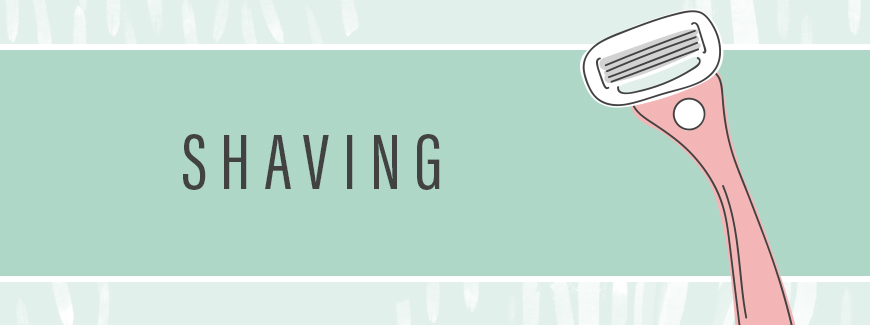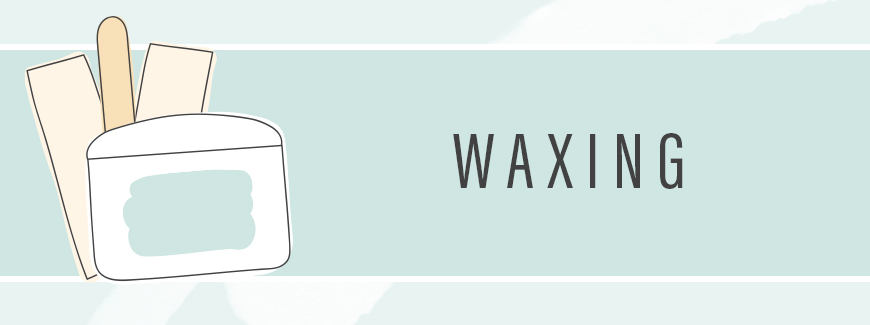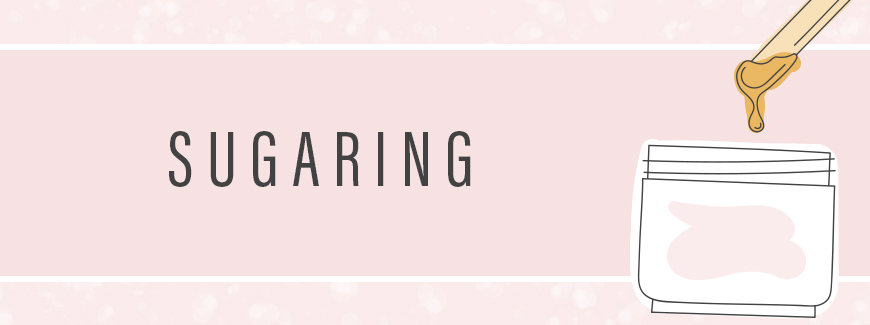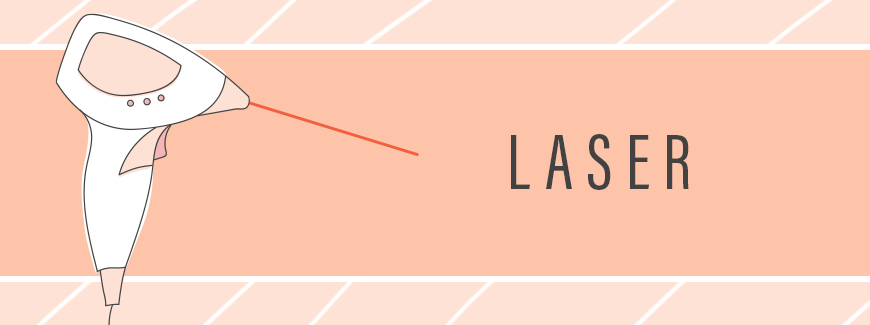Sick of Shaving? Here’s *All* the Intel on Your Hair Removal Alternatives
If you happen to be the kind of gal who's trashed your razors and cancelled all withstanding waxing appointments, bless up for that. We're living in an era where beauty is all about what makes you feel confident. But if you're the kind of person who loves a silky smooth finish from head-to-toe, it's important to be in-the-know about all your options so you can choose your go-to summer hair removal method wisely.
Keep reading for the intel on every way to go hairless this summer.

If you want quick, easy hair removal: Shaving
At this juncture, you probably already know that a fresh shave will only last you about two—maybe three—days. "Because hair isn't removed from the follicle, it'll grow back quicker than some other methods," explains Dendy Engelman, MD, a New York City dermatologist. Even though the OG method doesn't last as long as other alternatives, it is cheaper. And you don't have to leave your house for a treatment (which is always a plus).
How to ready your skin: While you're likely already applying lotion on the reg to keep your skin barrier happy, that same formula will go a long way in prepping your hair and follicles for an optimal shave. According to Dr. Engelman, it also helps to soften the hair follicles. Once you're in the shower, she recommends an emollient-rich shaving cream, which will make the hair removal process a breeze. Fun fact: Dr. Engelman says that shaving exfoliates your skin, so consider adding an in-shower moisturizer before stepping out of the shower to seal in a silky smooth finish.

{{post.sponsorText}}
How to master your technique: "Shaving against hair growth gives you a closer shave, but the blunt-tipped end of hairs can grow back into the skin rather than up and out," Dr. Engelman tells me. To guard against this, make sure you're shaving along the natural trajectory of your hair for the least irritation and to reduce your chance of ingrown hairs.
How to deal post-shave: After you've towel-dried, pile on yet another coat of lotion (if you haven't used on in-shower, of course) to soften the skin and follicles for the future.

If you want to get vacation-ready, pronto: Waxing
Of all your hair-removing options, waxing has the biggest reputation for discomfort, but good news afoot: After one, unpleasant sesh, you won't have to deal with razor burn for two to three beach-filled weeks. Plus, over time, some even say the waxing process itself gets easier, makes your skin more radiant over time, and eventually helps your hairs to grow back finer. Sounds pretty blissful, right?
What to know before you go: According to Melanie Coba, European Wax Center’s national brand ambassador, your first treatment will likely be the most unpleasant one you have. Because of hair growth cycles, all of your hair won't come back at once. Meaning that, if you're consistent with your appointments, you won't have as many active follicles to wax on round two or three. She adds that waxing leads to more radiant skin over time. "The wax provides a mechanical exfoliation that leaves the skin soft and refreshed," she says. "Many guests are surprised at how quickly their hair changes, and the results only get better and better the longer you do it."
How to ready your skin: Coba advises ditching exfoliators and your razor in the days leading up to your wax, since waxing itself exfoliates the skin. Instead, Cybele Fishman, MD, an integrative dermatologist in New York City, recommends moisturizing with a lotion that includes ultra-soothing ingredients like aloe, calendula, or bisabolol (a derivative of chamomile).
What to expect during the process: No sugar coating it here: Waxing isn't always a walk in the park, so prepare for some discomfort. Small areas of your body—like armpits—tend to last about 10 minutes, while large areas—like your legs—can take an hour or more.
How to deal post-wax: According to Coba, avoid touching the treated areas at all costs: "This will only clog pores and transfer the bacteria that’s on your hands onto your face and other parts of your body," she tells me. In addition to a hands-off policy, she stresses the importance of avoiding the sun, hot showers, and sweaty, tight clothes for 48 hours afterward, since the pores in your skin will be extra sensitive (so that's a "no" on hot yoga).
According to Dr. Engelman, waxing can lead to ingrown hairs, since the process affects the superficial epidermis when the hair is pulled from the follicle. "When the skin regrows it can grow over the follicular opening and cause ingrown hairs," she explains. To prevent this, make sure to begin exfoliating post-treatment and give your skin a little extra TLC in the form of hydration over the next few weeks.

If you like waxing, but want to make it natural: Sugaring
Consider sugaring the all-natural, gentler version of waxing. While the price is steep at upwards of $200 for a full-body treatment, you'll be set for five or six weeks after just one treatment. Plus, the ingredients are basically the same ones you'd use to make a tall glass of lemonade, so the procedure is super summer-appropriate.
What to know before you go: According to Enrique Ramirez, esthetician and founder of face to face nyc, preparing for a sugaring sesh is mostly mental. While it's not as jarring as waxing, it will still hurt a little. Also, just like laser, sugaring does not jibe with any stripping skincare products, like retinols, glycolic acids, Accutane, or other topical acne medications, so ditch those a couple weeks before your appointment. And when you hop in the shower, Ramirez advises mixing your over-the-counter body scrub with a bit of water for a slightly gentler exfoliation.
What to expect during the process: "Sugaring is a paste made out of sugar and lemon juice, which molds on the body and then is pulled with the technicians gloved hand," says Ramirez. Basically, it's just like ripping off a lemonade band-aid—over and over again.
How to deal post-sugaring: Rejoice! After treatment, your sugared skin will basically care for itself. "Sugar is a humectant, which draws water to the skin, so sugaring is a more moisturizing treatment than waxing," explains Dr. Fishman. Of course, it never hurts to add a little extra hydration from an aloe-based lotion to your dermis afterward too.

If you're over your hair—like forever: Laser
If you long for a hiatus from shaving, laser hair removal is definitely your best bet. In a surprising twist of fate, Dr. Engelman says this procedure actually works best in the colder months when body parts aren't being exposed to UV rays. "The sun stimulates melanin production and with the combination of laser then it increases the risk of hypo- or hyper-pigmentation," she says (both of which, according to her, can be combatted with an aggressive routine of sunscreen and moisturizer, however).
The procedure is definitely an investment in time and money (you'll need between 6 and 12 sessions, usually priced upwards of $100 per size of the area), but it's also deemed by derms to be the most effective, permanent, and the least harmful to your skin barrier. Check. Check. Check.
What to know before you go: Make sure to thoroughly vet your laser spa ahead of going. "The business should have both Nd:YAG and Alexandrite lasers," explains Andréa Young, co-owner of NYC's Beam Laser Spa. Alexandrite lasers tend to operate in shorter pulses (around 755 nm), making them good options on fairer complexions. While treating darker skin tones was once impossible since using the wrong frequency could cause hyper-pigmentation or even burns, the long-pulse Nd:YAG lasers (which operate around 1064 nm) have been shown in scientific studies to yield positive results on a wide range of skin tones when used by an experienced practitioner.
However, according to Dr.Engelman, since lasers target pigment, unwanted side effects could occur, so she says, "laser hair removal is not the best option for [those with dark skin tones]." It's important to ask your technician questions, because they should be able to explain to you what they're using and why. And keep in mind that before treating large areas, you should always do a small patch test to see how you react to any laser treatment.
How to ready your skin: Since the laser targets the roots of your hair follicles, Young says to avoid any treatments like waxing or threading eight weeks beforehand and to discontinue the use of retinols, AHA or BHAs, or topical acne medications at least two weeks before your treatment. Replace them with lots of sunscreen and (you guessed it!) moisturizer.
What to expect during the process: Lasering is often described as the feeling of a rubber band being snapped on skin. To treat small areas like your bikini line and your armpits, you should be in and out of treatment in 20 minutes. But for larger areas like your legs, block out 45 minutes or so.
How to deal post-laser: Avoid heat and any harsh products, for the next two to three days as your skin slowly heals. When you do go outside, make sure to wear all the SPF. Your technician might also recommend a hydroccortizone cream, an anti-inflammatory that Dr. Engelman says reduces your risks of post-inflammatory pigment changes.
Here's what happened when one editor shaved her face to make it easier to apply makeup and 5 shaving pro tips for silky smooth skin.
Loading More Posts...